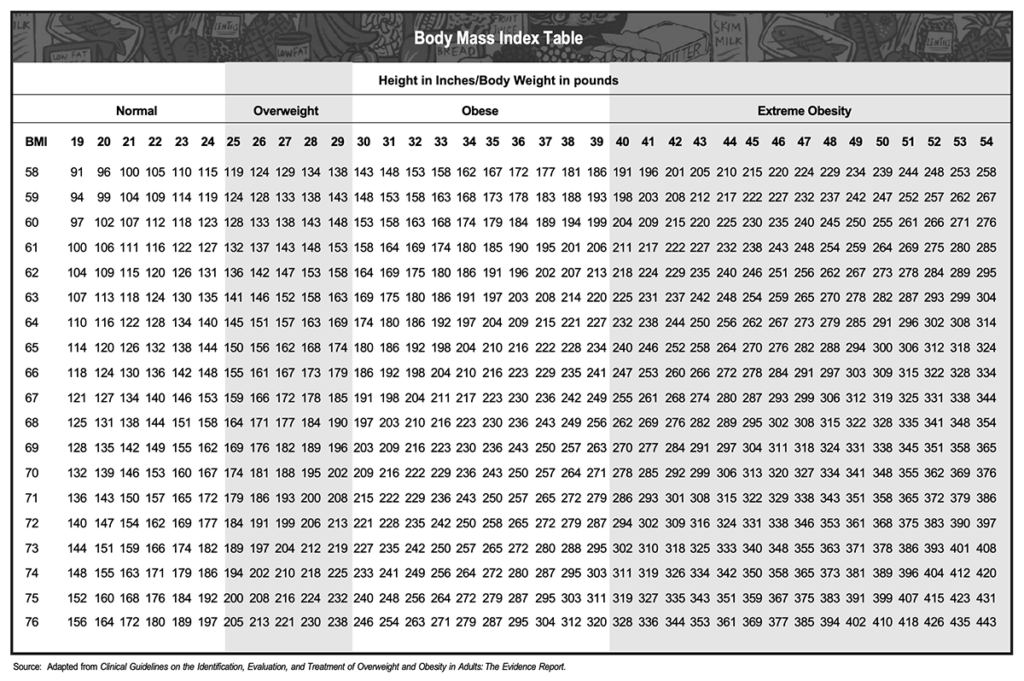6 ways to determine your target weight – and why it doesn’t matter right now
Are you just starting your weight loss journey? If so – and if you haven’t yet selected your target goal weight – congratulations! That’s actually great news. You don’t need to figure out your preferred maintenance weight right now. In fact, if you have a lot of weight to lose, you shouldn’t worry about that for quite some time.
It’s more important that you are all-in on doing all you can to get healthy in the here and now. Once you’re a bit further down this road – with some tangible successes on your scorecard – it will be easier to make a decision about your target weight.
One big goal is daunting
Trust me on this. On Day 1 of my journey, my doctor explained that we’d set out a series of mini-goals to improve my health and it would actually be a little while before we’re ready to set a goal for the total number of pounds I should lose.
I should have just listened to her and trusted the process. But, I’m a researcher and I just had to do some Googling to see what the medical community actually considers a healthy weight range for someone my age and height. Oops! That was a mistake! LOL!
That’s because I found out that my “ideal weight” is actually around the same number of pounds I need to lose to get there! Science says I need to lose the equivalent of an entire person! Ouch! Did I need to know this information today? Nope. And knowing it just makes it a bit harder to see – and appreciate – the small, everyday victories along the way to that larger number.
I’m not the only one that struggles with this. I hear from so many others on this same path who are frustrated. They’ll say things like, “I only lost 5 pounds this month. What am I doing wrong? Gah!” Nothing! You are doing absolutely nothing wrong. In fact, you’ve got it all right.
Related reading: Everything you need to know about Zepbound
Limit your weight loss to a healthy rate
If you lost 5 pounds this month, that’s equivalent to 1.25 pounds per week – well within the range of healthy and safe weight loss (between 0.5 and 2 pounds per week). Congratulations! But, we’re human and we tend to focus on the far-off goal instead of the situation on the ground. We need to change that. After all, did you agonize about every ounce you gained over the last few months, years, or decades? Probably not. Then why are you micromanaging the loss of each ounce on the way back down?
For me, I understand that it’s going to take time… a lot of time… to get to my goal of being a healthier person. I’m going to see a lot of different numbers scrolling on the scale but on Day 1 of my weight loss journey, it’s not all that important to know the exact number I’ll eventually hit.
Instead, pick some mini-goals
Now I understand why many doctors, mine included, shy away from focusing on an exact target weight at the beginning of the journey. It’s just not all that motivating when the goal weight seems so far away. It feels more like a fairytale and not something that you can actually accomplish.
By focusing on short-term goals though, you can check off a bunch of mini-accomplishments along the way, making it feel easier to keep going. As I chip away at these smaller goals, the mega-goal – my ideal weight – will seem like more of a possibility instead of a pipe dream.
What are my current goals? They are pretty modest, including:
- Lose 9 percent of my body weight (from my starting weight) by my niece’s college graduation in mid-May.
6 ways to determine ideal weight
I totally get it. You understand all this is going to take time but you really want/need to know what target weight you may be shooting for.
There are a multitude of ways to gather information that will help you select your ideal weight. Like so much in the weight loss zone, there is no hard-and-fast rule to “ideal weight.” It will be different for everyone. Two people who are the same age and height will have different ideal weights due to all sorts of factors, including exercise level, body composition (muscle mass, body fat ratios), and other health factors.
But, here are a few methods to calculate your target weight.
Ask your doctor
The easiest way to select your target weight is to have a discussion with your doctor. He or she will give you context on the number they feel is right for you.
Ideal Weight Calculator
Heading over to the Ideal Weight Calculator is probably the easiest way to get an idea of your future target weight. It simply asks your age, gender, and height and then it calculates your target weight using five industry-accepted formulats.
Ideal Weight Calculator uses these studies in its calculations
J.D. Robinson (1983)
Female: 49 kg + 1.7 kg per inch over 5 feet
Male: 52 kg + 1.9 kg per inch over 5 feet
D.R. Miller (1983)
Female: 53.1 kg + 1.36 kg per inch over 5 feet
Male: 56.2 kg + 1.41 kg per inch over 5 feet
B.J. Devine (1974)
Female: 45.5 kg + 2.3 kg per inch over 5 feet
Male: 50 kg + 2.4 kg per inch over 5 feet
G.J. Hamwi (1964)
Female: 45.5 kg + 2.2 kg per inch over 5 feet
Male: 48 kg + 2.7 kg per inch over 5 feet
Healthy BMI Range
The World Health Organization says a healthy BMI for both women and men is between 18.5 and 24.9.
Note that most of these formulas were developed for medication dosing purposes.
Body Mass Index (BMI) Calculator
Body Mass Index divides a person’s weight (in kilograms) by the square of height in meters. High BMI numbers may indicate a high concentration of body fat.
The Centers for Disease Control (CDC) warns that you should use your BMI as one tool to determine your ideal weight since it does not take into account a person’s overall health or body composition. The calculation is solely based on your height and weight.
Try the CDC’s BMI calculator.
Body Mass Index Table (National Institutes of Health – NIH)

Download a PDF of the Body Mass Index Table.
Waist-to-hip ratio (WHR)
WHR measures abdominal fat, which can be an indicator of health risks, such as heart disease.
How to measure your waist-to-hip ratio:
- Measure the narrowest part of your waist (near your belly button)
- Measure your hips at their widest point
- Divide your waist measurement by your hip measurement
According to World Health Organization (WHO) data, these numbers indicate abdominal obesity:
- Females: A waist-to-hip ratio over 0.85
- Males: A waist-to-hip ratio over 0.9
Waist-to-height radio (WTHR)
This ratio compares your waist measurement with your height. Higher WTHR ratios may indicate health challenges, such as high blood pressure or high cholesterol.
How to measure your waist-to-height ratio:
- Measure your waist in inches and divide it by your height in inches.
A WTHR ratio of 0.5 or less is normal. Above that range may indicate the presence of additional health challenges.
The wrap-up
You will likely use several or all of the resources above to figure out the best goal weight for you. And, don’t worry if you adjust that number over time. As you get further along in your weight loss journey, it will be easier to determine the “right” weight for you.
Are you struggling to select a goal weight or have you decided not to pick a number just yet?
Email me or post your thoughts on the Shots to Shed Pounds Facebook page.






